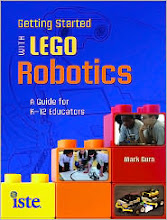Duval Schools look to Legos to expand interest in science, spark imagination
50 schools to be involved
Benjamin Wright, 11, aims his team's robot during a FIRST Lego League Regional Championship in January.
Duval students in 50 schools will be playing next year with Legos, with School Board approval.
Along the way they’ll learn about math, computer coding, engineering, problem-solving and teamwork, organizers said.
It’s part of a proposal Duval’s School Board is expected to vote on this month.
Superintendent Nikolai Vitti has proposed spending $187,700 to set up
Lego robotics teams in 50 schools, an increase from the 36 schools
currently operating such clubs.
The long-term vision, said Mason Davis, assistant superintendent, is
to have robotics teams in all 161 Duval public schools. He said the
mostly extra curricular activity will spark students’ engagement in
technology fields and hopefully get them more involved in math, science
and computers in class.
Vitti said Duval’s investment will be unprecedented among large, urban school districts.
“We are setting a trend as a large urban school district to have this
many schools participating in FIRST Lego League,” Vitti said.
That claim could not be verified by FIRST Lego officials Friday.
Vitti wants the school district to work with Renaissance Jax, a
nonprofit Lego League affiliate partner for FIRST, the national
nonprofit entity which organizes thousands of robotics and technology
competitions around the country, involving teams from kindergarten
through 12th grade.
FIRST stands for “For Inspiration and Recognition of Science and Technology.”
“This is going to be the first proposal where a school district
contracts for the growth and management of their FIRST robotics teams to
a FIRST affiliate partner,” said Mark McCombs, head of Renaissance Jax,
which already runs dozens of FIRST Lego teams and events in 20 Florida
counties.
The contract would involve training teachers and volunteers to run
the teams and coordinating practices and qualifying competitions.
In 2011, Renaissance Jax had 14 teams and no tournament. It had 220
teams last year totaling 1,100 students who competed in tournaments at
the University of North Florida and Jacksonville University.
Legos are plastic bricks of various colors and size that can be combined to build things.
Lego also makes parts and kits that robotics teams use to build
programmable robots for team competitions, including the FIRST Lego
League tourneys.
Lego touts the robotics teams and competitions as having important educational benefits.
Team surveys show that 86 percent of participants say they are more
interested in doing well at school, 84 percent are motivated to take
challenging math and science courses, and 80 percent are more interested
in STEM-related jobs.
The gender gap in science and technology isn’t evident at the
tournaments, McCombs said. About half the competitors last year were
boys and half were girls.
“They are learning about STEM (science, technology, engineering and
math education) and finding out that they are way more capable than the
adults around them have told them they are,” McCombs said....
Read the full article at its source:




